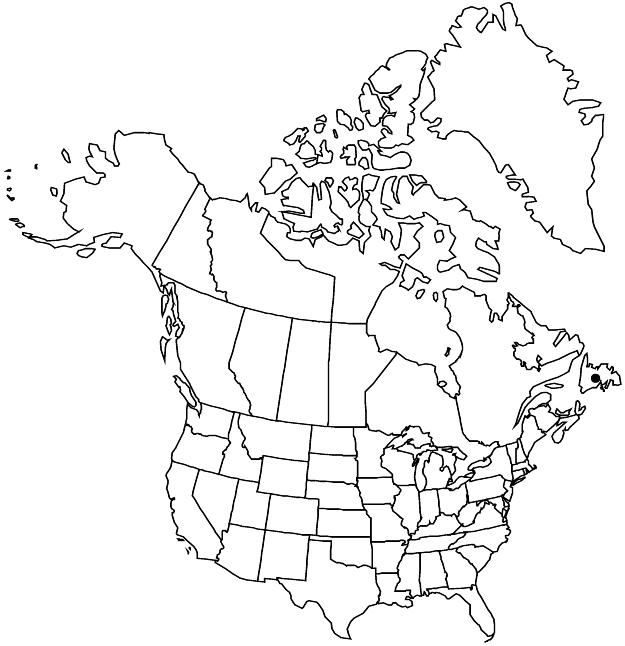Cerastium terrae-novae
Rhodora 22: 176. 1921.
Plants perennial, tufted, rhizomatous. Stems loosely ascending to suberect, branched, very leafy, 10–15 cm, pubescence short, dense, glandular; small axillary tufts of leaves usually absent. Leaves tending to be marcescent, sessile but spatulate proximally; blade elliptic-oblong, 5–14 × 1.5–3.5 mm, apex obtuse, densely glandular-hirsute. Inflorescences lax, 1–3-flowered cymes; bracts ovate-lanceolate, margins very narrow, scarious, glandular-pubescent. Pedicels mostly erect, slender, 10–25 mm, 1–4 times as long as sepals, densely glandular-pubescent. Flowers: sepals ovate-oblong, 5.5–6.5 mm, elongating to 6–7 mm in fruit, margins broad, apex obtuse, glandular-pubescent; petals narrowly oblanceolate, 7–10 mm, 1.5–2 times as long as sepals, apex 2-fid; stamens 10; styles 5. Capsules ovate-cylindric, ca. straight, short, broad, 9–13 mm, ca. 2 times as long as sepals; teeth 10, erect or partially spreading, margins convolute. Seeds brown, 1.3–1.7 mm diam., with prominent papillae around margins and rows of small, transverse ridges on sides; testa inflated, loose (rubs off when rolled between finger and thumb). 2n = 108.
Phenology: Flowering summer.
Habitat: Serpentine gravel, sands, rocky tablelands
Elevation: 20-700 m
Distribution

Nfld. and Labr. (Nfld.).
Discussion
Cerastium terrae-novae is the only member of the European C. nigrescens group of species to occur in North America. The group is distinguished by large seeds with loose testae. Cerastium terrae-novae is distinguished by its narrowly elliptic leaves, usually purple-suffused stems and sepals, broad, straight capsule, short pubescence, and poorly developed inflorescence that often is reduced to a single flower.
Selected References
None.